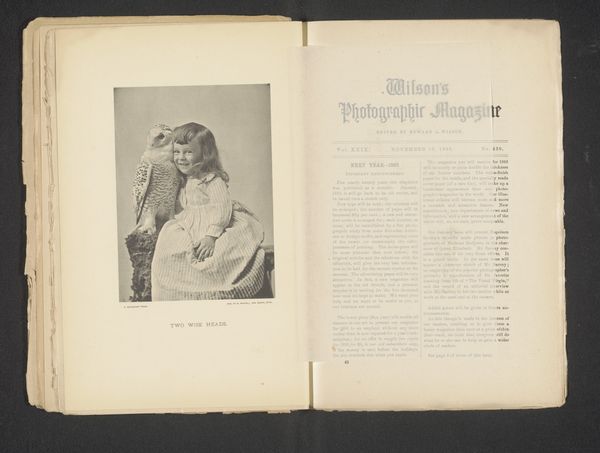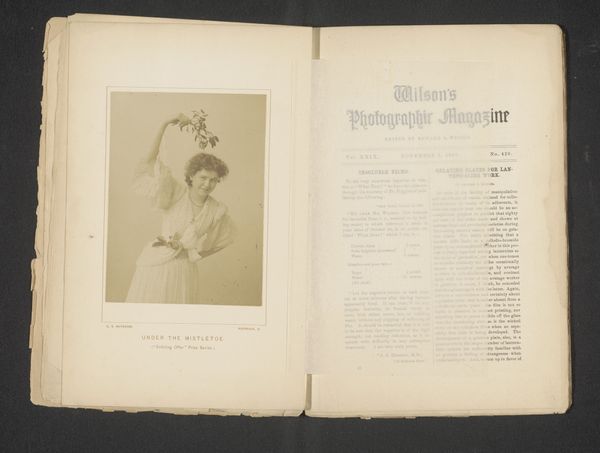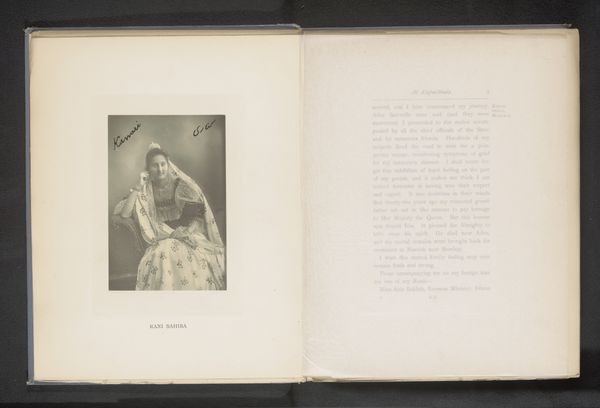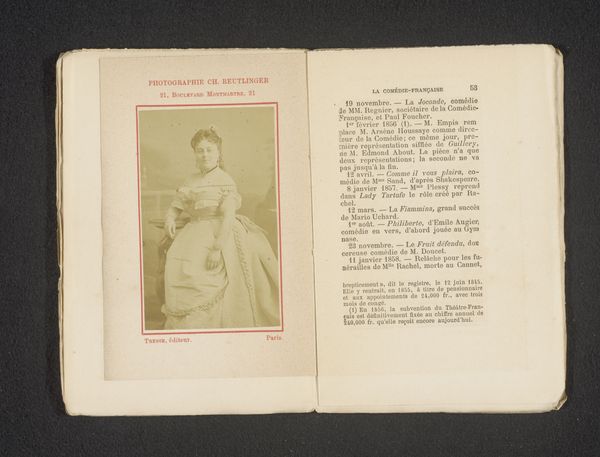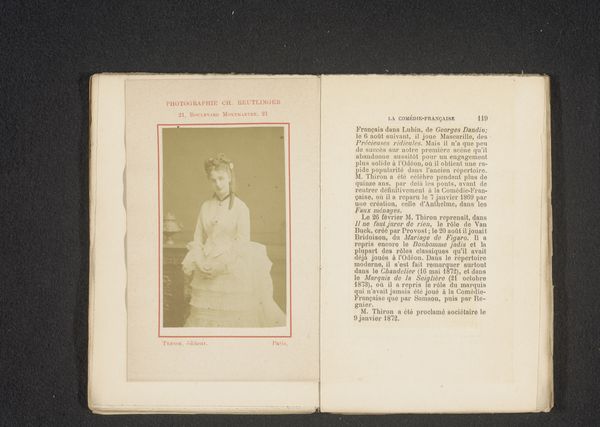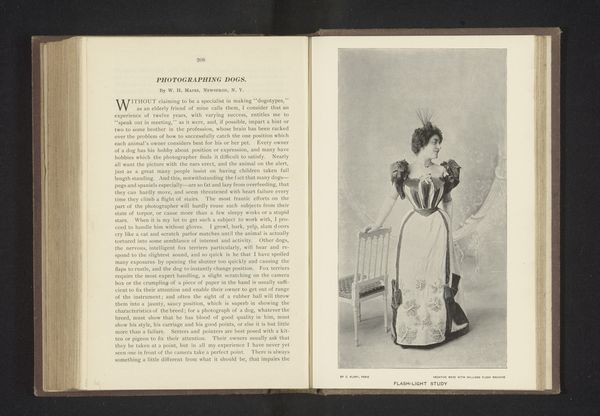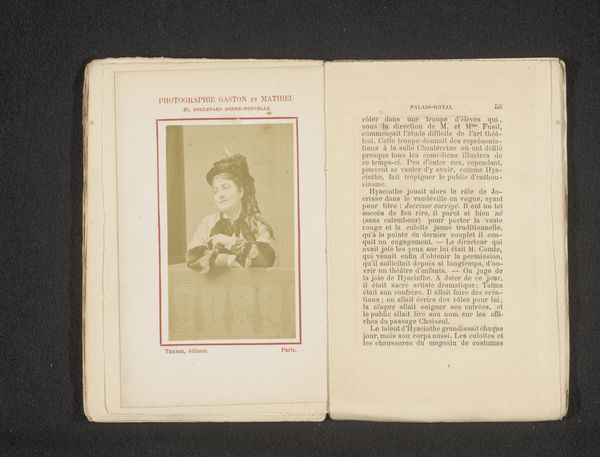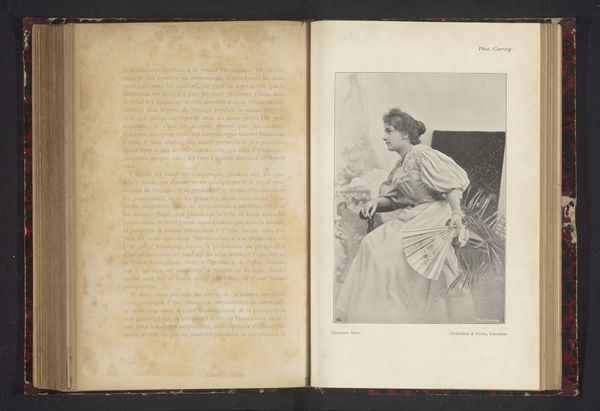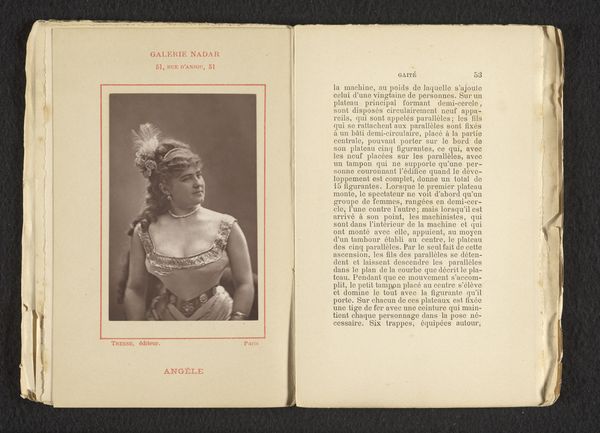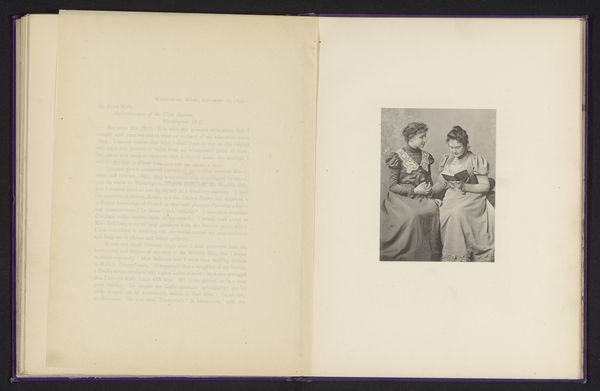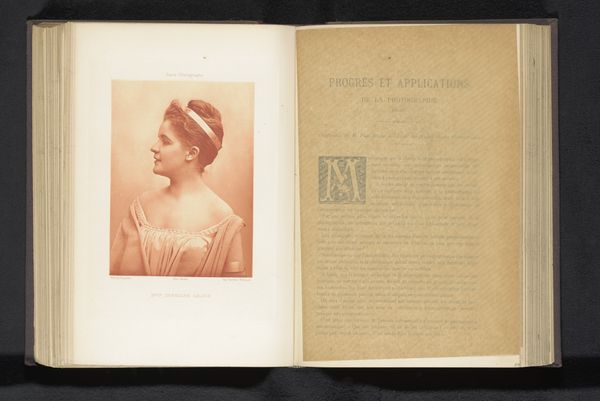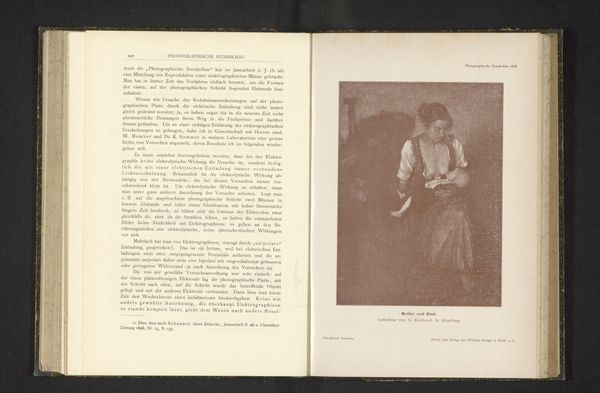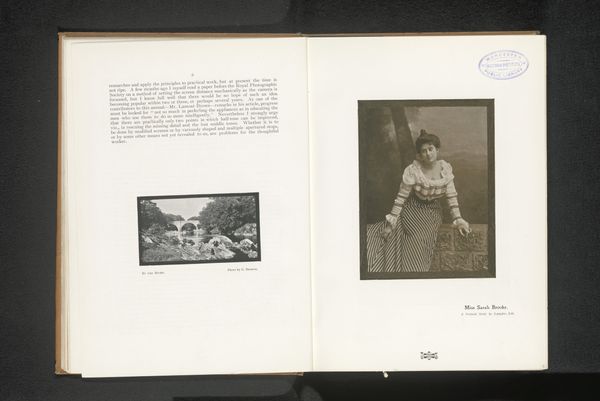
Dimensions: height 141 mm, width 103 mm
Copyright: Rijks Museum: Open Domain
Curator: This is James Fitzallen Ryder's, "Portret van een onbekende vrouw met een waaier", translated to "Portrait of an unknown woman with a fan", created before 1899. It's a gelatin silver print, typically found on paper. Editor: The photograph evokes a sense of quiet introspection. The sepia tone and the subject's posture – the gentle resting of her head on her hand – suggests a contemplative mood. Curator: Exactly, there's a dialogue between the artist's intent and the woman's identity. Ryder, situated within late 19th-century social currents, captured her image but withheld her specific story, turning her into a representation of womanhood. The fan is fascinating here—a ubiquitous but highly class-coded tool, especially popular during that time. The material and production—from the crafting of the fan itself, perhaps ivory and silk—is really critical to the reading. Editor: And this withholding complicates how we read this "unknown" woman and those consumer practices. We know photography was beginning to become accessible, yet access and ownership weren't equitable across society. Curator: The photographic medium itself is indicative of production capabilities during this time, allowing for wider consumption of portraiture while raising critical questions regarding visibility and representation. Who could afford, and had access to commissioning such photography and under what conditions? Also, let’s think about gender; the male photographer and a presumed-female subject— what is Ryder suggesting? What agency did she possess, and what are the power dynamics we should observe today? Editor: This photograph prompts questions regarding its own materiality—a paper reproduction designed for consumption. The act of capturing this moment, and turning it into a printed form, highlights both the artistry and the commodification involved. How do the textures – paper, clothing, skin – interact and transform meaning? Curator: Ultimately, thinking through the material reality—photography, and the woman as art object — forces us to critically engage with complex power structures. Ryder makes visible the gaps and fissures within late 19th-century notions of identity and gender. Editor: And it highlights photography's role, its evolving technology and potential to document, yet potentially distort or conceal certain elements. I see now how powerful objects and modes of display like a fan or photograph can be in revealing social systems.
Comments
No comments
Be the first to comment and join the conversation on the ultimate creative platform.
